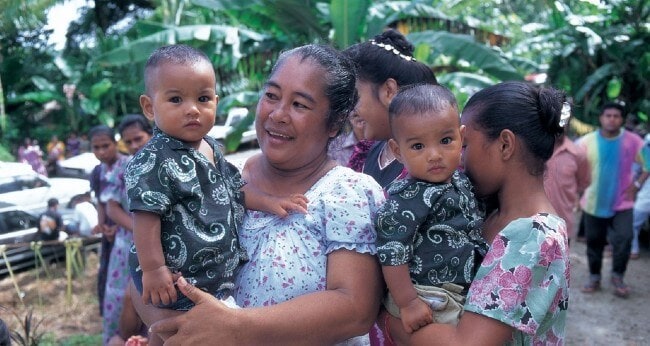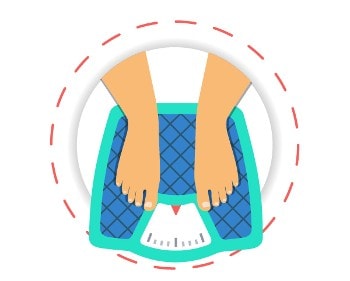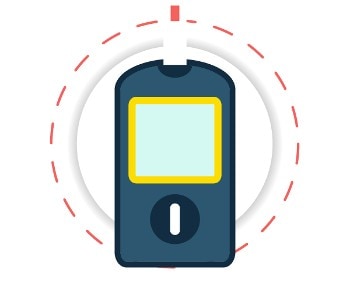Island Health

Chronic conditions and health risk behaviors are common in the US territories and freely associated states—the US Virgin Islands, Puerto Rico, American Samoa, Guam, Commonwealth of the Northern Marianas Islands (CNMI), Republic of the Marshall Islands (RMI), Federated States of Micronesia (FSM), and Republic of Palau.
Because of their location and factors related to economic and cultural development, these islands have higher rates of chronic diseases and premature death compared to other US population groups. Contributing factors include:
- Social determinants of health: Historical traumas such as colonialism have contributed to poverty, unemployment, and poor housing, conditions that are known to increase the risk for unhealthy behaviors and chronic diseases.
- Natural disasters: Typhoons and hurricanes often result in loss of water, electricity, housing, and health services.
- Healthy food access: Isolated jurisdictions may have limited access to fresh produce because their economies have moved away from farming and fishing. Shipping costs for these foods make them unaffordable for most residents.
- Public health infrastructure: Island jurisdictions have limited staff with public health training. Distance from the continental United States can make in-person training unfeasible. Technology limitations, such as reliable internet connections and phone lines, can limit access to virtual training and other technical assistance.
- Health care systems: Some of the factors that limit preventive health care are shortages of health care workers, an emphasis on hospital-based acute care, and the enormous costs of sending patients off-island for specialized care.
CDC’s National Center for Chronic Disease Prevention and Health Promotion (NCCDPHP) is working to reduce these challenges so that island populations have the opportunity to be as healthy as possible.
Compared to the 50 states and District of Columbia:

AMERICAN SAMOA
has a higher rate of overweight and obesity (93.5% vs. 73.6%).

PALAU
has a higher rate of diabetes (22.2% vs. 14.7%)

GUAM
has a higher rate of current smoking (25% vs. 12.5%).
CDC’s Approach
Starting in 2014, CDC’s Islands Program began coordinating funding across multiple divisions of NCCDPHP to allow for the most efficient use of resources and public health staff in island jurisdictions.
Data on chronic diseases and associated risk factors are lacking or outdated in most of the US territories and freely associated states. The Islands Program is working to provide local public health staff with the skills to collect the data they need to develop and use effective interventions, identify and address gaps in program delivery, and monitor progress in achieving program goals.
For example, the Islands Program supported an innovative approach to collecting adult population data on noncommunicable disease (NCD) indicators through the NCD Hybrid Survey in the US-Affiliated Pacific Islands. Questions from the Behavioral Risk Factor Surveillance System, National Health and Nutrition Examination Survey, and WHO STEPSexternal icon surveys were combined in one questionnaire. In addition, participants had their height, weight, blood sugar, cholesterol, and blood pressure measured.
The NCD Hybrid Survey was implemented in CNMI in 2016, in Palau in 2017, RMI and American Samoa in 2018, and in the FSM states of Kosrae and Pohnpei in 2019. More than 6,900 people participated. Survey data showed that the Affiliated Pacific Islands continue to have worse NCD outcomes compared to the 50 US states and the District of Columbia.
CDC has found that environmental approaches can promote health and support healthy behaviors in schools, worksites, and communities. The islands are using environmental strategies that reduce exposure to secondhand smoke in public places and for workers and children.
In 2018, CDC awarded funding to help the islands prevent type 2 diabetes and manage diabetes complications, prevent and manage high blood pressure and high cholesterol, and improve oral health.
The Chronic Disease Self-Management Programexternal icon (CDSMP) is a 6-week series of workshops for people with arthritis, diabetes, heart disease, lung disease, and other health problems. Proven benefits of CDSMP include less pain, more energy, more physical activity, better communication with health care providers, and more confidence in managing chronic diseases.
In 2016, CDC supported training for CDSMP for the Affiliated Pacific Islands. By the end of 2018, nine master trainers had trained 20 people to conduct CDSMP workshops in their communities, and 100 people had completed the program.